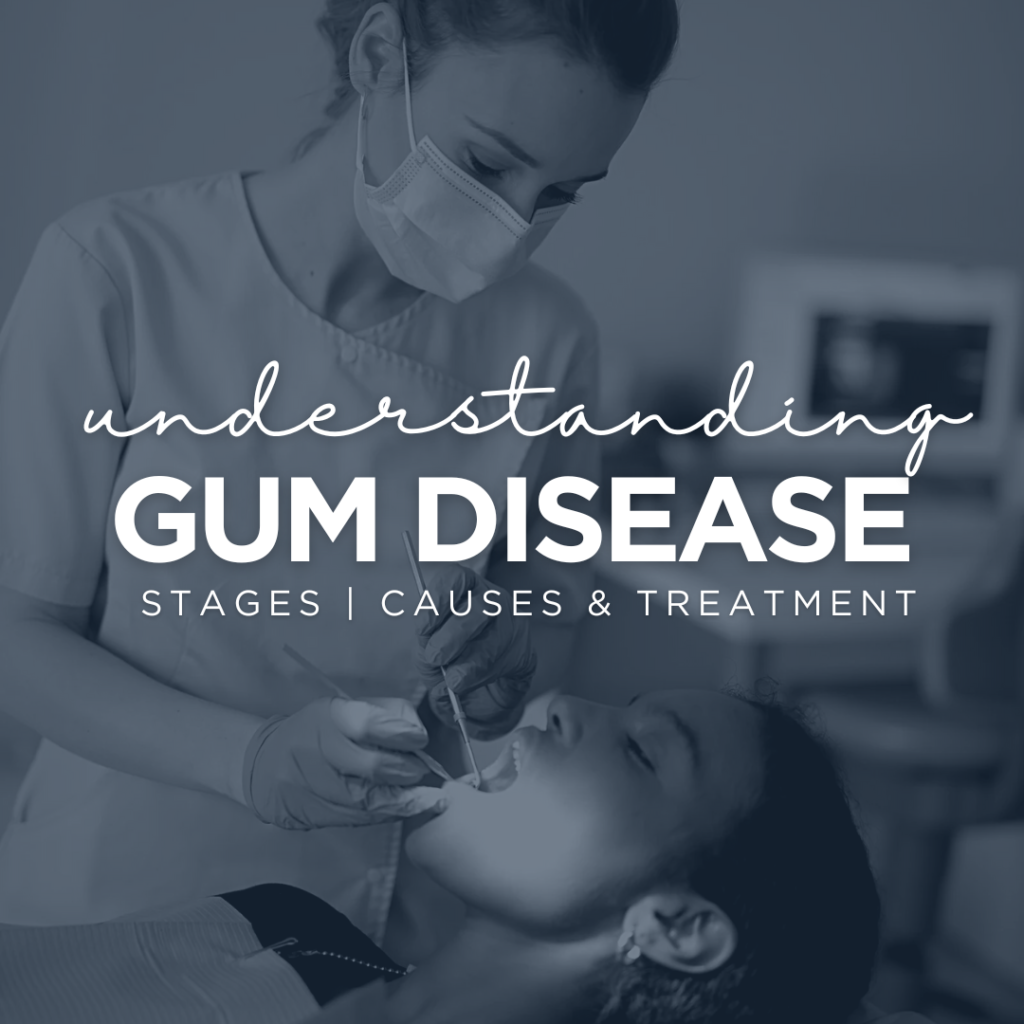Ever wonder why your gums bleed? It could be a sign of something more serious!
I’ve seen many patients who were surprised to learn that their bleeding gums were actually a red flag for a bacterial infection. Just listen to what some of my patients have shared:
- “I thought it was because of brushing too rough.”
- “I’ve changed toothpastes and brushes so many times, I’ve lost count but still bleeding.”
- “I thought bleeding gums were normal.”
- “I never knew it was because of an infection.”
Bleeding gums can be an early warning sign of gum disease, a common yet preventable condition that affects the oral health of millions. This blog will delve into the causes of bleeding gums, the stages of gum disease, and effective treatments to maintain healthy gums.
The Science Behind Bleeding Gums
Bleeding gums are often a symptom of poor oral hygiene, leading to plaque buildup along the gum line. Plaque is a sticky film of bacteria that can inflame and irritate the gums, causing them to bleed during brushing or flossing. The inflammation process starts with the bacteria in plaque producing toxins that irritate the gum tissue. This response is a part of the body’s immune reaction to infection.
Recent research highlights the role of the body’s immune response in the development and progression of gum disease. When plaque is not removed, it hardens into tartar, which further irritates the gums and provides a more extensive surface for bacterial colonization. The immune system responds to these bacterial invaders by sending white blood cells to the affected area. This immune response, while aiming to fight infection, also leads to the destruction of the surrounding gum tissues and bone over time.
Researchers have found that certain bacteria, such as “Porphyromonas gingivalis” and “Treponema denticola”, play a crucial role in the development of gum disease. These pathogens disrupt the balance of the oral microbiome, leading to chronic inflammation and tissue damage. Studies have also shown that genetic factors and systemic conditions like diabetes can influence an individual’s susceptibility to gum disease, making it a multifactorial condition that requires a comprehensive approach to treatment and prevention.
What Causes Bleeding Gums?
Bleeding gums can result from various factors, including:
- Gingivitis: The earliest stage of gum disease, characterized by red, swollen gums that bleed easily.
- Hormonal Changes: Pregnancy, menstruation, and menopause can make gums more susceptible to bleeding.
- Medications: Certain medications, such as blood thinners, can increase the likelihood of gum bleeding.
- Nutritional Deficiencies: Lack of vitamins, particularly vitamin C and K, can weaken the gums.
- Systemic Conditions: Diseases like diabetes and leukemia can also cause gum bleeding.
Stages of Gum Disease
Gum disease progresses through several stages, each more severe than the last. Understanding these stages can help in early detection and treatment.
1. Gingivitis:
- Symptoms: Red, swollen gums that bleed easily when brushing or flossing.
- Causes: Plaque buildup due to inadequate oral hygiene.
- Treatment: Improved oral hygiene practices, professional dental cleanings, and possibly medicated mouth rinses.
2. Early Periodontitis
- Symptoms: Increased inflammation and bleeding, bad breath, and slight bone loss.
- Causes: Untreated gingivitis leading to plaque hardening into tartar.
- Treatment: Scaling and root planing (deep cleaning) to remove plaque and tartar from below the gum line, and improved home care.
3. Moderate Periodontitis
- Symptoms: Gum recession, deeper periodontal pockets, moderate bone loss, and increased tooth mobility.
- Causes: Progression of untreated early periodontitis.
- Treatment: More intensive scaling and root planing, possibly antibiotics, and improved oral hygiene practices.
4. Advanced Periodontitis
- Symptoms: Severe gum recession, deep periodontal pockets, significant bone loss, loose teeth, and potential tooth loss.
- Causes: Continued progression of untreated moderate periodontitis.
- Treatment: Surgical interventions such as flap surgery or bone grafts, advanced periodontal therapies, and rigorous oral hygiene.
Treating Bleeding Gums and Gum Disease
Effective treatment of bleeding gums and gum disease depends on the stage and severity of the condition. Here are some common treatments:
- Professional Dental Cleaning: Regular cleanings can remove plaque and tartar that brushing and flossing alone can’t handle.
- Scaling and Root Planing: A deep-cleaning procedure that removes plaque and tartar from below the gum line to help gums reattach to the teeth.
- Antibiotic Therapy: In some cases, antibiotics may be used to control bacterial infection.
- Surgical Treatments: For advanced gum disease, surgical options such as flap surgery, bone and tissue grafts needed to restore gum and bone health.
- Laser Therapy: Laser treatments can effectively remove diseased tissue and promote healing with minimal discomfort.
Preventing Gum Disease
Preventing gum disease starts with maintaining excellent oral hygiene and regular dental check-ups. Here are some tips to keep your gums healthy:
- Brush Twice Daily: Use a soft-bristled toothbrush and fluoride toothpaste to brush your teeth at least twice a day.
- Floss Daily: Flossing removes plaque and food particles from between teeth and along the gum line.
- Use Mouthwash: Antiseptic mouthwash can help reduce plaque and prevent gingivitis.
- Regular Dental Visits: Professional cleanings and check-ups can detect early signs of gum disease and prevent progression.
- Healthy Diet: A balanced diet rich in vitamins and minerals supports gum health.
- Avoid Tobacco: Smoking and tobacco use increase the risk of gum disease and hinder healing.
Bleeding gums can be a sign of underlying gum disease, which if left untreated, can lead to severe oral health issues. Understanding the stages of gum disease and adopting preventive measures are crucial for maintaining healthy gums.
If you’re experiencing bleeding gums or any symptoms of gum disease, schedule a consultation with us. We’ll provide personalized advice and a detailed treatment plan to help you achieve optimal oral health.
#GumHealthAustralia #BleedingGums #GumDiseaseStages #OralHealth #Gingivitis #Periodontitis #GumDiseasePrevention #HealthyGums




